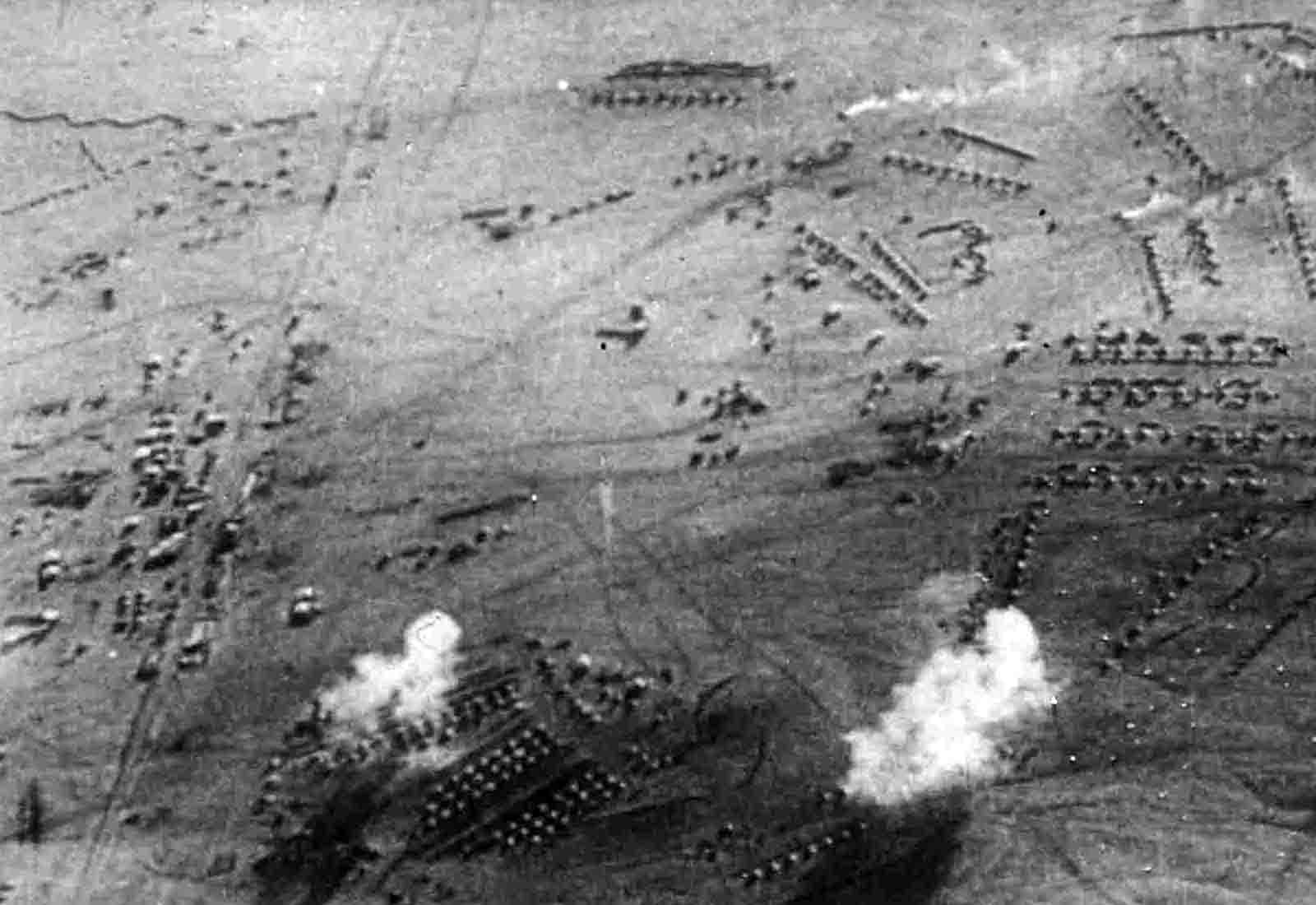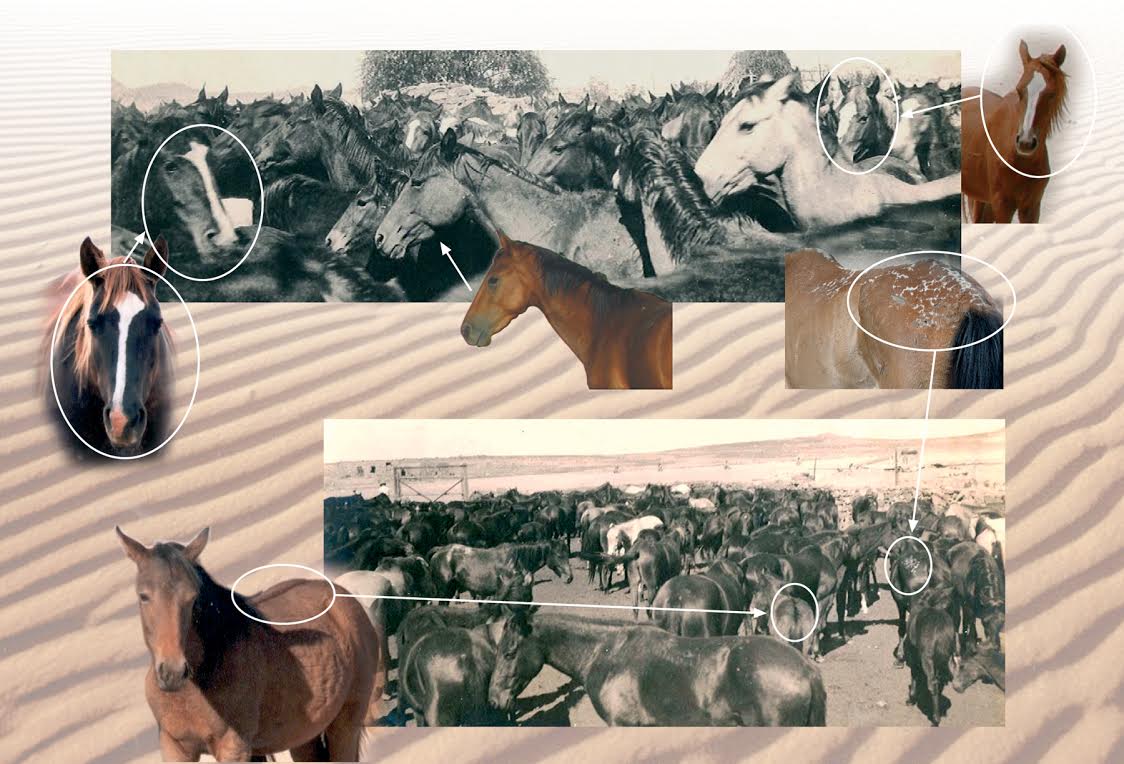Wild Horses of the Namib
Wednesday, 8th March 2006
The Wild Horses of the Namib are often seen on the sparsely populated plains west of Aus when travelling towards Luderitzbucht. It is estimated that the population range between 90 and 150 animals. (Wikipedia)
These horses have adapted to life in the arid Namib desert environment and are frequenting the Garub area where there is a waterhole as well as a hide from where visitors can view these remarkable animals. Whilst travelling between Aus and Luderitz make some time to visit the hide and please adhere to the following rules.
- Take special care on the tar road and avoid driving at night as the horses might stray onto the road.
- Do not get too close to the horses at Garub and remain in the viewing hide. (Disturbance can lead to foals being separated from their mothers.)
- Keep your distance for your own protection, too. The horses are not aggressive, but serious injury can be sustained through their movements or kicks while interacting with each other.
- Please refrain from feeding the horses at all times! (Namibia Wild Horses Foundation)
Origin of the Wild Horses
There are numerous theories regarding the origin of the wild horses. The only agreement is that they are not indigenous. Horses were imported into Southern Africa by Europeans. The wild horses are therefore descended from domesticated horses and were for one or other reason forced to adopt a feral way of life.
But how come did domesticated horses stray into this area? And how did it happen that they turned feral?
Shipwrecked?
Some theories point to a ship with a cargo of horses and other domestic animals which was wrecked about 25 km south of the Orange River mouth, roughly 200 km from Garub, in the late 19th century.
Duwiseb Castle - Hansheinrich von Wolf?
Others refer to the stud farm at Duwisib owned by Hansheinrich von Wolf - about 250 km north-east of Garub. However, a farm manager was in charge when von Wolf was absent during the First World War and after he was killed in action. And according to the farm’s bookkeeping no horses were lost until the late thirties, whereas reports about Wild Horses near Garub already started to circulate in the twenties.
Furthermore, neither of these theories takes into account that horses do not migrate over large distances but usually stay in the area they know. Thus it can be concluded that the Wild Horses are descendants of horses lost in the vicinity of Garub and Aus.
But the basis of the herd existing today can hardly have been formed by a few run-away horses. The number of animals and the diversity of their characteristics rather suggest that the initial group was fairly large. (Gondwana Desert Collection)
World War 1
Another explanation is that the Wild Horses are remnants of the First World War. During March 1915 the German colonial and South African Allied forces gathered in the Aus / Garub Area.
The Germans were based at Aus where they kept around 2000 horses. They also had two planes with which the Allied Camp were bombed sporadically.
The Allied forces that pitched camp at Garub in March 1915 consisted of about 10,000 South African soldiers with 6,000 horses.
Just imagine a concentration of around 8,000 horses in the Aus / Garub Area! Can this explain the existence of the Wild Horses?
It is said that the German retreat largely proceeded in an orderly fashion so it is unlikely that many horses were left behind.
A report, compiled later about the events of war at Aus, states: "In the morning of 27 March the indefatigable pilot officer Fiedler flew to Garub and caused great bewilderment by successfully dropping bombs onto the enemy camp and amongst about 1 700 grazing cavalry horses." (Hans von Oelhafen: Der Feldzug in Südwest 1914/15, Berlin 1923, page 117).

The South African forces were about to start their offensive and had orders to follow hot on the heels of the retreating German soldiers. Most likely there was no time to catch all of the bewildered horses although some Allied soldiers would have been left behind after the main force left. There was a borehole for replenishing locomotives on the nearby railway line at Garub and although it was blown up by the retreating German forces, it was repaired quickly enough.
Kubub Emil Kreplin
Namibian amateur historian Walter Rusch came across another piece of the puzzle which completes the picture. In photo albums which belonged to Emil Kreplin, the mayor of Lüderitz from 1909 to 1914, he found pictures of a horse stud farm at Kubub, south of Aus where Kreplin bred workhorses for mining – and racehorses for the flourishing Lüderitzbucht after diamonds were found in 1908.
Kreplin was interred in the Union of South Africa during the hostilities and later lost his fortune in the depression years in Europe. It is assumed that during or after the war the horses, ownerless and not contained by fences, would have begun to scatter, leaving the overgrazed Kubub area in search of better grazing and following the scattered rainfall. They would have eventually made their way to the permanent water source at Garub, becoming wilder over time and linking up with any remaining Union horses and any other abandoned horses in the area. (Namibia Wild Horses Foundation)
It is probably thanks to the diamond finds at the coast that the horses were not caught again. As early as 1908 the German colonial administration established restricted areas which extended about 100 km inland and were strictly controlled. The surroundings of Garub were part of Sperrgebiet II.
Nobody was allowed access, with no exception made for hunters or horsecatchers either. Garub with its borehole and the drinking trough, which was set up later, became the pivotal point in the horses’ existence.
In the photograps of Kreplin's stud horses there are remarkable similarities in characteristic markings between the Kubub horses and the present-day wild horses that show traces of Hackney, Trakehner and Shagya Arab breeds. (Namibia Wild Horses Foundation)
The photo below show some corresponding characteristics. The pictures of the Kreplin Stud (source: private collection Walter Rusch, Windhoek) were taken 90 years before those of the Wild Horses (Telané Greyling.)

The Namib Wild Horses - A breed in it's own right.
Genetic tests have been performed, although none to date have completely verified their origin. The most likely ancestors of the horses are a mix of riding horses and cavalry horses, (Wikipedia)
Substantiated biologically and historically, the theories can thus be brought together. Any horses that were abandoned in the turmoil of war would also have gathered in the area around Aus, finding water at the springs after the rains and at the Garub borehole. (Namibia Wild Horses Foundation)
For 100 years the horses were able to develop in almost complete isolation, generation by generation, through seasons of drought and abundance, becoming a pure breed through decades of natural selection. They are now regarded as a breed in their own right, the ‘Namibs’. (Namibia Wild Horses Foundation)
Survival
The population of the wild horses fluctuated between 50 and 280 in the 100 years of their existence. (Namibia Wild Horses Foundation) These fluctuations are influenced by drought and predators such as spotted hyenas, leopards and black backed jackals. Especially young foals and juveniles, provide a major food source in the southern Namib Desert for the spotted hyena.
Over the years the horses have adjusted their behavior (patterns of feeding and drinking, resting and playing according to the amount of grazing influencing distances to travel, and prevailing temperatures) in order to adapt to their feral existence.
Despite the harsh environment in which they live, the horses are generally in good condition, except during times of extreme drought. (Wikipedia)
"After good rains when there is abundant grazing, the Wild Horses adopt a ‘leisure mode’: they feed at night, and as there is no need to cover vast distances to obtain their fill they remain close to the waterhole for longer periods of time. Up to 80 percent of the herd gathers there. They will drink every day, regardless of temperature, and play and rest. Their leisure time offers the best opportunity for observing them and for taking great photos." (Namibia Wild Horses Foundation)
The wild horses even though "wild" can, during extended periods of drought not survive totally on their own. It is essential to keep the population viable to maintain a positive gene pool and to prevent inbreeding.
Limited intervention measures were put in place to ensure the future of the Namib's Wild Horses.
More information on these animals and how you can assist to ensure their survival is available on the website of the Namibia Wild Horses Foundation.
Sources
Namibia Wild Horses Foundation - www.wild-horses-namibia.com; [Online] Accessed on 27 June 2018
Gondwana Desert Collection - Media Release 08/03/2006
Hans von Oelhafen: Der Feldzug in Südwest 1914/15, Berlin 1923
Namib Desert Horse - https://en.wikipedia.org/wiki/Namib_Desert_Horse#cite_ref-popdata_18-1; [Online] Accessed on 27 June 2018




